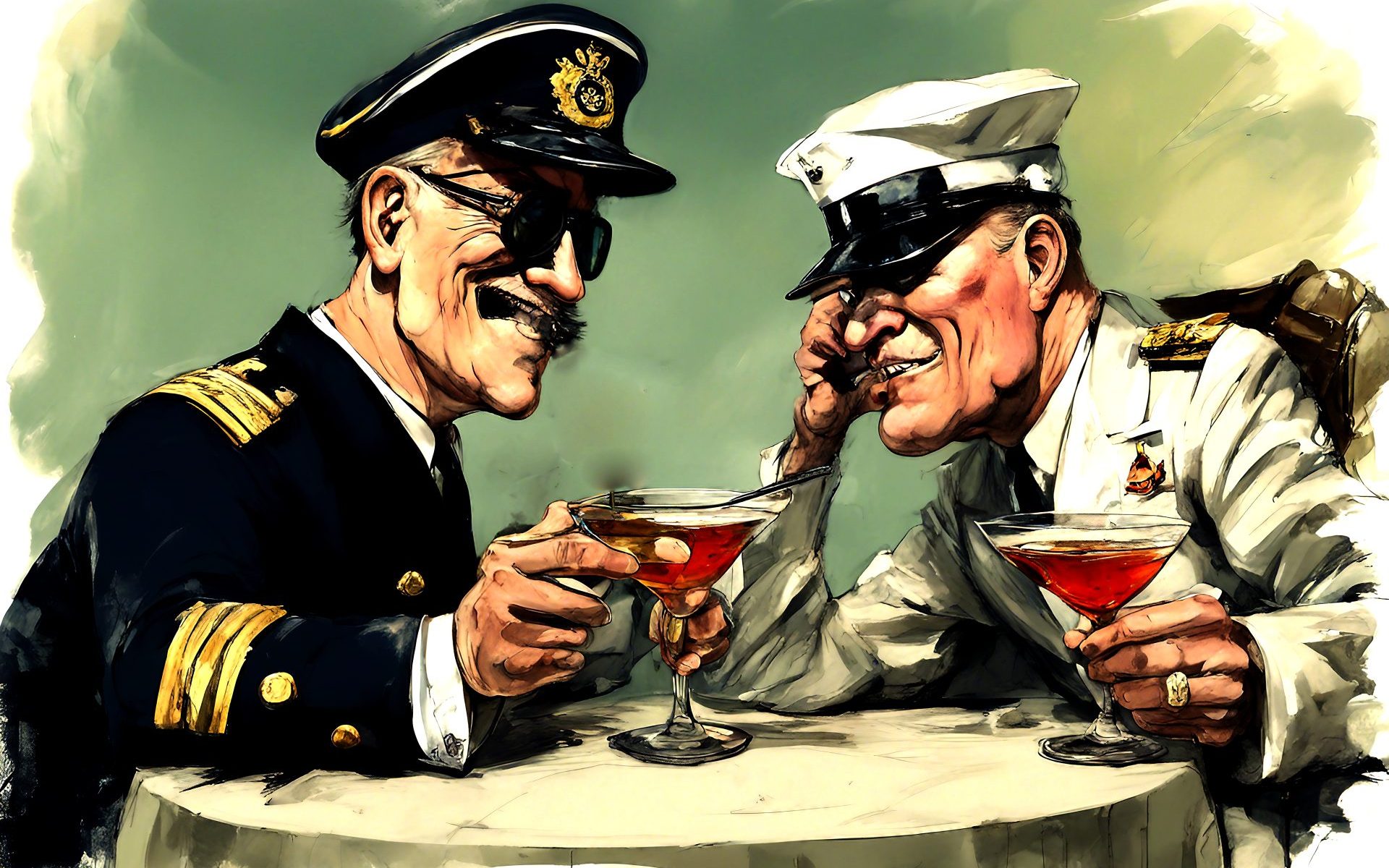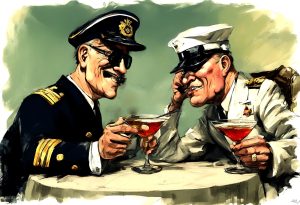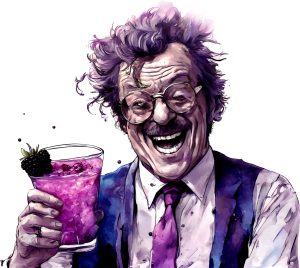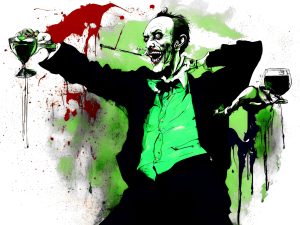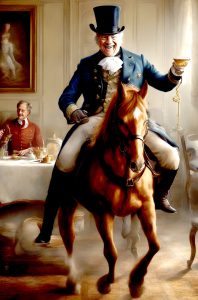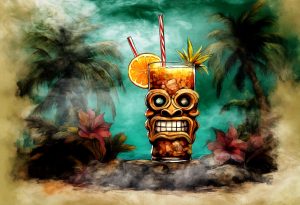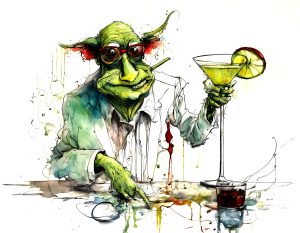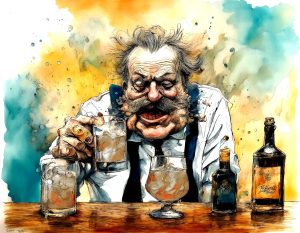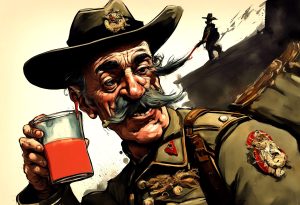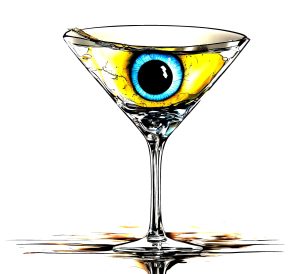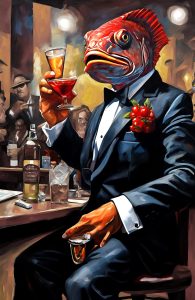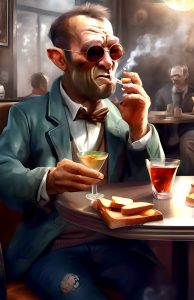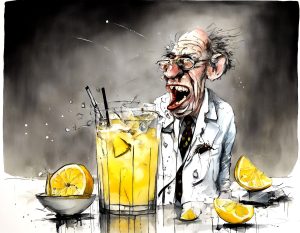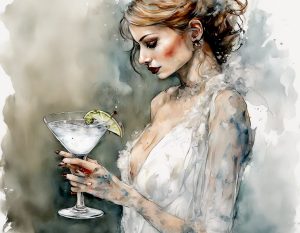You might readily assume from its makeup that this is from the Tiki cocktail scene, but the Army and Navy, essentially a Gin Fizz but with Orgeat replacing the sugar syrup, likely came from the Army and Navy officers’ club in Washington after an inter-forces football match, or so legend has it.
Bramble
Dick Bradsell’s second most famous creation, after the Espresso Martini, the Bramble was, he said, inspired by the wild blackberries he used to pick on the Isle of Wight as a child.
Corpse Reviver #2
As may be assumed from its title, the chief purpose of a Corpse Reviver #2 is to rouse the drinker back from the dead. It can certainly work a treat, the morning after a lively wake.
Dry Martini
Such a simple a drink, yet it is so ingrained in culture. Over the course of the 20th century, the Martini became increasingly dry. Starting in the 1920s at a ratio of 2:1, gin to vermouth, 6:1 is now the norm. The ‘Montgomery’, named after the Field Marshal’s penchant for attacking only when in possession of great numerical superiority, is 15:1.
Earl Grey Martini
It wouldn’t be right to talk of breakfast without including tea, at least in passing. Not just any tea in this case but Earl Grey, that smoky brew, high in caffeine, that is flavoured with bergamot, a cold-pressed oil from the rind of bergamot orange fruit and originally gifted to the 2nd Earl of Grey by the Chinese.
Fog Cutter
Popularised by Trader Vic’s, the Fog Cutter, or, as they call it, the Samoan Fog Cutter, was, like Mai Tais, likely created by Donn Beach of Don the Beachcomber Fame in the 1930s.It is not a drink for the faint-hearted.
Gimlet
In the 19th century British sailors were given lime juice, preserved in alcohol, to combat scurvy. Naval provisioner Lachlan Rose invented a lime concentrate that used sugar as a preservative instead, removing the alcohol. This was later marketed as Rose’s Lime Juice Cordial.
Gin & It
Although a century or more old, the Gin & It, the ‘It’ being sweet Italian red Vermouth, had its heyday, in Britain, as a pub standard, post WWII. Long out of fashion, its appeal declined inversely with the metaphoric rise in popularity of the Dry Martini, of which the Sweet Martini, as Gin & It was originally known, is said to be the forerunner.
Gin Fizz
On seeing the ingredients you may well ask what makes this different from a Tom Collins. Well Gin Fizz are shaken with ice to make them cold and foamy then strained, while Tom Collins are just stirred over ice and are relatively flat.
Leche de Pantera
Like all historical drinks there are myths surrounding Leche de Pantera (Panther’s Milk). What is certain is that it originated with the Spanish Foreign Legion in the 1920s. Some claim that it came about when the head and founder of the Spanish Foreign Legion, General José Millán-Astray asked Perico Chicote of Bar Chicote in Madrid …
Martini de Buñuel
Surrealist film maker Luis Buñuel was a serious Martini aficionado. In the classic cocktail scene in ‘The Discreet Charm of the Bourgeoisie’ we hear that “a classic cone-shaped glass is best” and that “a Dry Martini should be sipped like champagne.” Buñuel liked them very cold and he liked them very dry.
Negroni
Most bartenders default to be a red, sweet, Italian rosso. They should really try a Catalan vermut. This is a game changer. Catalans regularly drink it neat on the rocks. It is one of the most popular drinks, especially at Sunday lunchtime or as a general aperitif. It smells like a warm kitchen, not a visit to the dentist like the ubiquitous Martini & Rossi Vermouth which is never taken alone, and for good reason.
Pink Gin
It is questionable that you can even call this a cocktail, some insist that they should have at least 3 components, but it is a classic dating back to the Royal Navy in the 19th century when, oddly, Angostura was prescribed as a cure for sea sickness.
Red Snapper
Easily dismissed as ‘just a Bloody Mary with gin’ Red Snapper can gain from further delicate nuance.
Toast & Marmalade Martini
The Marmalade Martini saw the light of dawn in 1930 in The Savoy Cocktail Book by Harry Craddock, an American who came to the UK to escape Prohibition. It became the quintessential cocktail book of the time and is still required reference for any contemporary bartender.
Tom Collins
Perfect for hot summer afternoons, Tom Collins is probably the most well known of the Collins family of drinks, a Collins being a sour cocktail, that is, a spirit mixed with sugar and citrus, that has been topped up with soda water. Basically a Tom Collins is alcoholic lemonade for grown-ups. Lovely for a picnic or a right old punt.
Vesper
75 ml Gordon’s gin 25 ml Polish vodka 12 ml Lillet Blanc (Kina Lillet is no longer manufactured) Shake with ice. Sieve into coupe glass. Dress with lemon peel. The Vesper was Ian Fleming’s creation. Bond is on the lash again. “Just a moment. Three measures of Gordon’s, one of vodka, half a measure of …
White Lady
Harry Craddock, he of the Savoy Cocktail Book fame, claimed it as his own signature cocktail, and even buried one, in a shaker, in the wall of the Dorchester. However it appears that it had been around a good while before his time.
